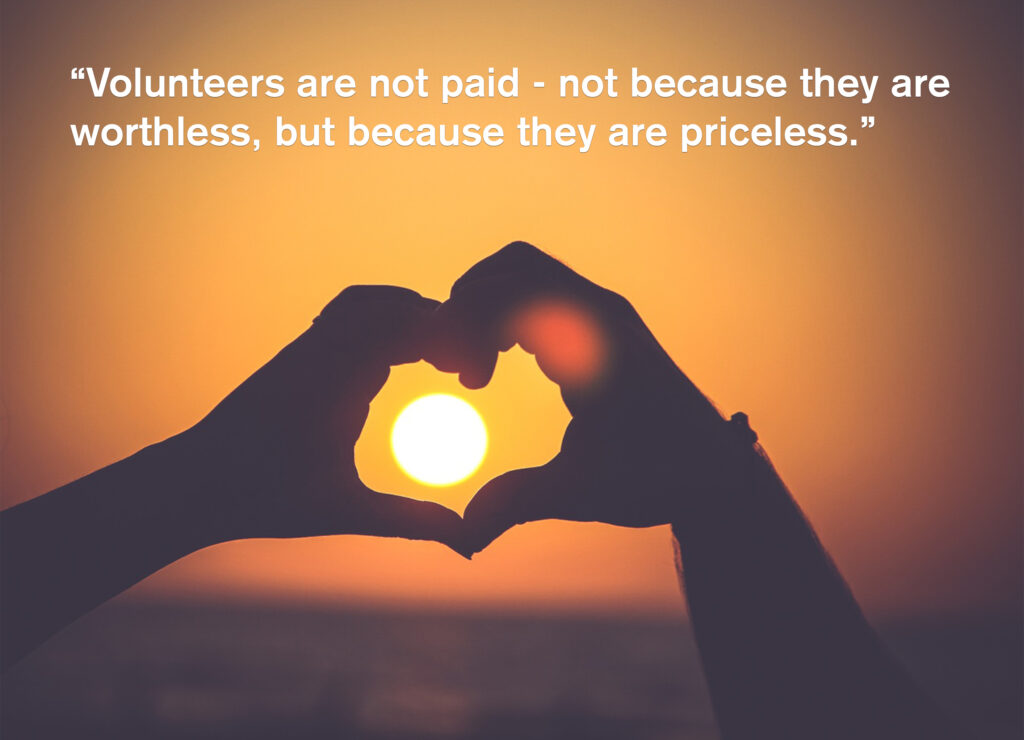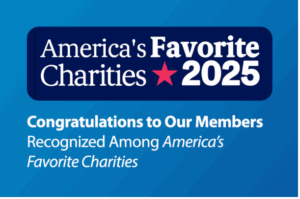Jim Starr | February 2, 2021
Making Employee Volunteers Matter
Read “Making Employee Volunteers Matter: Part II.”
America’s Charities has conducted research on the trends in employee engagement and workplace giving for the past three years – compiled in our series of Snapshot research reports. Each year, the importance of employee volunteering rises to the surface as an area of growing importance. But what’s interesting is that the anecdotal stories and real-life case studies haven’t changed that much. Consider this real-world example (names have been changed):
Development Director Kathy, of the local office of a national nonprofit, Emergency Relief, was called by one of its biggest supporters – a multinational pharmaceutical company, Smith & Brown (S&B). S&B typically donates to Emergency Relief about $100,000 a year locally and more nationally. S&B’s Community Relations Director, Maria, called to say that a group of employees wanted to volunteer together – to team build and do good. Maria explained to Kathy that they were looking to volunteer the following week for about half a day. S&B being such a valuable partner, Kathy’s immediate response was “Fantastic. I’ll get back to you with details in a couple of days.”
After hanging up the phone with Maria, Kathy immediately called their Volunteer Director, Ryan, and explained the great opportunity to him. Ryan patiently listened and when Kathy was done, informed her that there weren’t any volunteer opportunities next week that would be of value to Emergency Relief that fit those parameters. That was not the answer Kathy was looking for as S&B was a significant partner. So both Kathy and Ryan visited Amy, their Programs and Services Director. After some discussion, Ryan suggested that a group of volunteers could come in and pack Relief Kits (handed out to people impacted by a disaster.) Kathy loved it – she could bring them into the warehouse and have S&B employees pack items into bags. Amy informed Kathy of a couple of things: (1) Emergency Relief bought relief kits in bulk for very cheap; (2) the warehouse was full of relief kits, so more weren’t really needed; and (3) someone would need to purchase the individual items for the relief kits for this volunteer activity.
All three valued their relationship with S&B so they came up with a plan to make it happen. On the appointed day, Maria and the group of volunteers showed up for the activity. They learned more about Emergency Relief and got a chance to help. Kathy and Maria did a quick follow-up a couple of days after. Maria said the employees enjoyed themselves and were hoping they’d get a chance to do something more “direct service” next time. None of those who participated signed up to be a regular volunteer, though one did switch their payroll deducted contribution to Emergency Relief as a result of their experience. And everyone went back to their regular routine.
 Sound familiar? Unfortunately, it happens every day in hundreds of well-meaning organizations and nonprofits. While the employees in our example were able to volunteer as a group and with a partner nonprofit, it didn’t address a critical need of the nonprofit. And there wasn’t any follow-up or lasting impact as a result of the engagement – for either side. At its core, this was a transactional experience among partners, instead of a meaningful opportunity to strengthen a strategic relationship.
Sound familiar? Unfortunately, it happens every day in hundreds of well-meaning organizations and nonprofits. While the employees in our example were able to volunteer as a group and with a partner nonprofit, it didn’t address a critical need of the nonprofit. And there wasn’t any follow-up or lasting impact as a result of the engagement – for either side. At its core, this was a transactional experience among partners, instead of a meaningful opportunity to strengthen a strategic relationship.
One of the six top trends revealed in our Snapshot Employer Research: The New Corporate DNA report is the importance of making sure the needs and expectations of all stakeholders are understood and aligned.
In fact, our research shows that the importance of workplace volunteering is accelerating. It is the second most important component of employee engagement programs, up from the fifth most important in our Snapshot Employer Research :Trends and Strategies to Engage Employees in Greater Giving research from two years prior. 68% of large companies listed volunteering as a component of their program in that original research. Two years later, that figure leaped to 92%.
However, our Snapshot Nonprofit Research: Rising Tide of Expectations report showed that nonprofits are struggling to meet this demand. More than 70% of companies want their volunteer opportunities to allow for team building, requiring activities that can be done in groups. 82% say this is important to their employees. However, nonprofits often struggle to find meaningful work that can be accomplished in groups and on short notice. Yet they feel obligated to provide some volunteer activity as they value the partnership and don’t want to jeopardize the financial support they receive from the partner.
It’s clear that more and more employees want to donate their time and more employers are providing opportunities for that. Nonprofits are recognizing this trend and searching for ways to maximize engagement.
What needs to happen is more than offering and accepting employee volunteers. Alignment between the needs of nonprofits, the interests of employees, and the expectations of employers is crucial – for all parties. There are several ways to accomplish this quickly.
- Work with trusted partners. This applies to both the company and the nonprofit. It should be easy for one to say to the other “No, but how about this solution?” Trust makes that conversation natural.
- Describe success. Each should describe what they hope to achieve through the volunteer engagement. That means asking questions and answering openly.
- Leverage technology. Nonprofits should make sure their volunteer opportunities – both group and individual – are posted on volunteering and employee engagement platforms companies are using. Companies should look at these as a first stop so they have a sense of the types of volunteer activities nonprofits need.
- Follow up. Evaluate how the activity went. Identify ways not only to improve but to continue and deepen the engagement of the employees in the mission of the nonprofit.
Four little steps, but each important and empowers all sides of the partnership to ensure interactions move from merely transactional to truly transformational for each party.
Limitations must also be realized: companies need to understand that not every nonprofit has volunteer opportunities that match their needs or their employees’ expectations. And nonprofits need to understand that companies respect and expect dialogue about their needs. A nonprofit shouldn’t automatically tie a company’s financial gift to its ability to provide a meaningful volunteer experience. However, limitations can also be an opportunity for a different kind of engagement.
I’ve seen strategic partnerships from all angles: the good, the bad, and the ugly. I can tell you from first-hand experience that the road to success is all about starting a dialogue, leveraging available technology, and building deeper partnerships!

Get Resources and Insights Straight To Your Inbox
Explore More Articles
Congratulations to Our Members Recognized Among America’s Favorite Charities
Each year, The Chronicle of Philanthropy releases its list of America’s Favorite Charities—the 100 nonprofits that raise the most from individual donors, foundations, and corporate…
Read ArticleThe Future of Corporate Giving: How Nonprofits Can Prepare
Corporate giving is a valuable part of the nonprofit funding ecosystem. Companies large and small have incorporated philanthropic efforts into their overall business plans, from…
Read ArticleJoin Us at the Workplace Fundraising & Volunteering Summit!
We’re excited to announce that America’s Charities President, Jim Starr, and Board Member, Fernando Lorence of JP Morgan Chase, will be speaking at the Workplace…
Read ArticleGet Resources and Insights Straight To Your Inbox
Receive our monthly/bi-monthly newsletter filled with information about causes, nonprofit impact, and topics important for corporate social responsibility and employee engagement professionals, including disaster response, workplace giving, matching gifts, employee assistance funds, volunteering, scholarship award program management, grantmaking, and other philanthropic initiatives.




